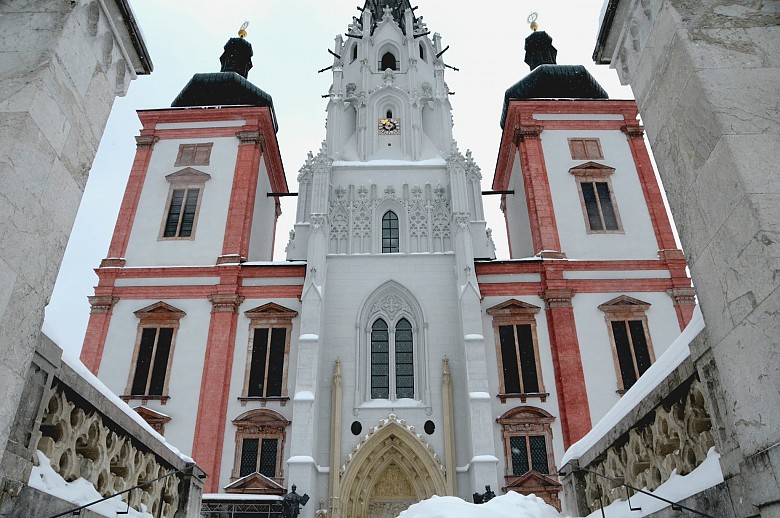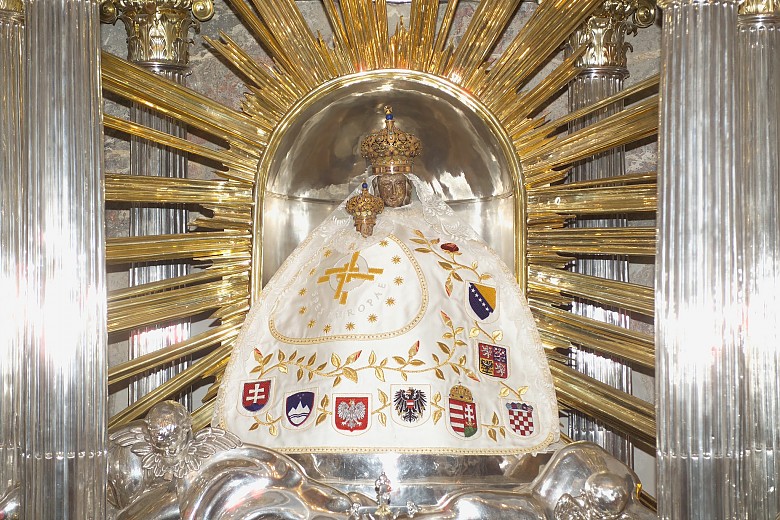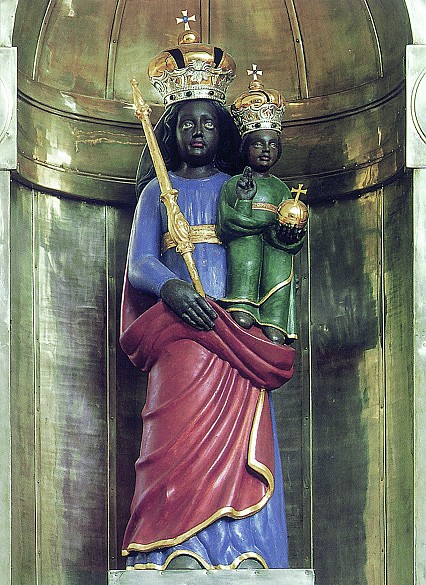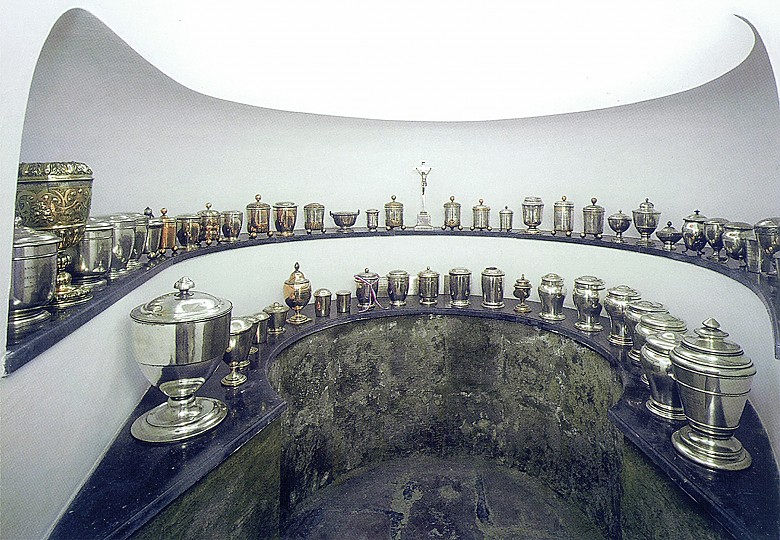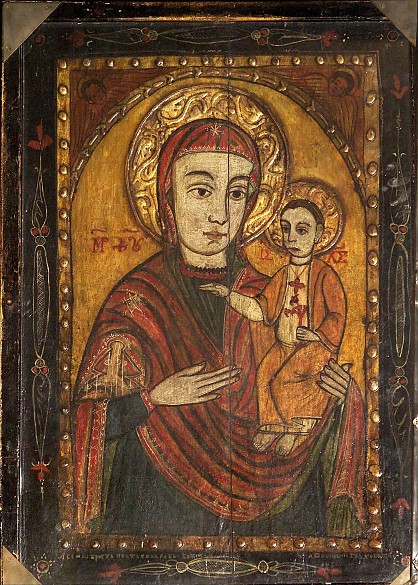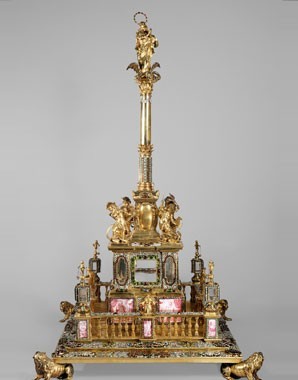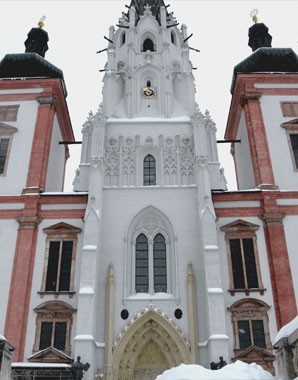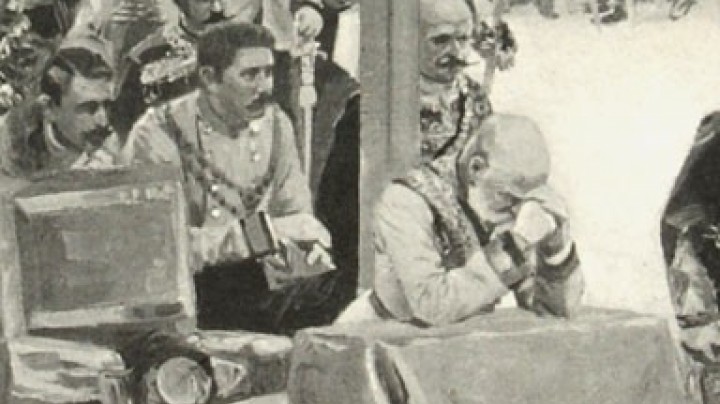Magna Mater Austriae – the veneration of the Virgin as the Habsburg state cult
Emperor Leopold I called himself ‘the lowest and least worthy servant of the Blessed Virgin Mary’ and the Mother of God his liege lady who had endowed him with his sovereignty. Mary, the Magna Mater Austriae, was the patron saint of the dynasty and the lands over which it ruled.
The foremost place of Habsburg Marian veneration was Mariazell in north-western Styria, which, thanks to its medieval founding legends with references to the Bohemian and Hungarian lands, was ideally suited to become a ‘pan-Austrian’ state shrine. Since the seventeenth century, Mariazell had become the quintessential Habsburg place of pilgrimage: important events and decisions were accompanied by pilgrimages. Thus, when the Bohemian rebels were executed in the central marketplace at Prague in 1621, Ferdinand II went on a pilgrimage to Mariazell in order to pray for the souls of the condemned.
The preceding victory of the imperial troops at the Battle of the White Mountain in 1620 was also attributed to the intercession of the Virgin Mary – the Catholic army carried an image of her into the fray which according to legend had been profaned by Protestants. To commemorate this decisive battle between the Catholic and Protestant forces, a new Marian cult was summoned into life (Our Lady of Victories / Maria della vittoria). This had great symbolic significance in both religion and politics – Marian veneration was after all a prominent feature distinguishing Catholicism from Protestantism.
The Virgin Mary was also propagated as the symbolic ‘generalissima’ of the imperial army against the Ottomans. Accordingly, the victory of Prince Eugene over Turkish forces at the Battle of Zenta in 1697 was attributed to the Blessed Virgin’s intercession. This is commemorated today by the miraculous image of the Pötsch Madonna in St Stephen’s Cathedral in Vienna, an icon originally from a village church in Pócs in eastern Hungary, which was supposed to have shed tears several times in 1696.
Another version of Marian veneration was the cult of Loreto. Legend has it that after the Fall of Acre – the last Christian bastion in the Holy Land – in 1291 the house of the Virgin Mary, the Casa Santa, was miraculously transported by angels from Jerusalem to Loreto on the Adriatic coast in Italy. It was thanks to Emperor Ferdinand II that the Loreto cult became a central focus of Habsburg piety. Before ascending the throne, he made a vow in Loreto in 1598 to free his country of heresy. After 1620 numerous copies of the Casa Santa of Loreto were made in the Habsburg lands. In 1627 Ferdinand’s wife, Eleonora of Gonzaga, had a Casa Santa erected in the Vienna court parish church, the Augustinerkirche. However, this has not survived, as it was pulled down by order of Emperor Joseph II in 1784.
That veneration of the Virgin Mary was a true ‘matter of the heart’ for the Habsburgs can be seen in the Herzgruft – the ‘heart tomb’; this was originally situated in the Loreto Chapel, where the hearts of the Habsburgs were interred in silver vessels and thus entrusted to the Blessed Virgin.
